Winter Lawn Care Is Essential
Winter lawn care is no less as important as summer lawn care and maintenance. Your winter lawn care to-do list wouldn’t include activities such as trimming, weeding and watering however, care is important if you want your lawn to maintain its healthiness during the upcoming months. Depending on the location of your home you will have to determine the best plants to grow and maintenance methods to use in order to achieve this. If your lawn has weeds to spot-treat you can comply with these winter lawn care techniques.
Winter Lawn Care Techniques
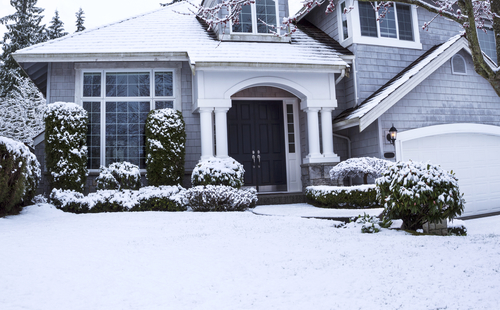
- Firstly, it is important to continue trimming your lawn even during the winter season. Note however, that there are several winter weeds that can’t endure frequent trimming and can die.
- Place a bag attachment onto your mower when trimming in order to capture seeds and prevent germination. In addition consider administering pre-emergent herbicide in the fall.
- Stop walking on your frozen lawn! Continuous walking or driving over a frozen lawn can kill its turfgrass crowns, which can create spring bare spots.
- If you can’t get all the autumn leaves eliminated before snowfall then not to worry as there is a solution for this. If the soil is damp, level it out carefully, as grass can pull up effortlessly. If you leave leaves on the grass during winter it can kill turf crowns. Moreover, they can lead to snow mold which can devastate your entire lawn.
Other Important Facts
Beware of vole trails that can be present in your lawn after snow fall. These mouse-like small creatures can be in both rural and suburban lawns. An abundant covering of snow on your lawn supply voles with the cover needed to devour grass roots in open lawn. this helps them to remain hidden from predators. As the snow liquefies their superficial runways become visible along the lawn veneer. The runways look like a tunnel without a top and soon as the snow softens you should trim your grass to prevent these critters from inhabiting your lawn.
If your lawn is wholesome you can leave out the grass seed. Another way to tackle the intrusion of voles is to obtain an outdoor cat. Contact us for more information and to inquire about our lawn care services.
Lawn Care In the Fall
Lawn care is necessary if you are to keep your garden looking its best. At the end of a busy and fun filled summer, your lawn may begin to demonstrate symptoms of wear and tear. Early autumn is an excellent time to maintain the damage and make sure that your lawn would be in good fettle for the upcoming year.
Lawn Care Guidelines
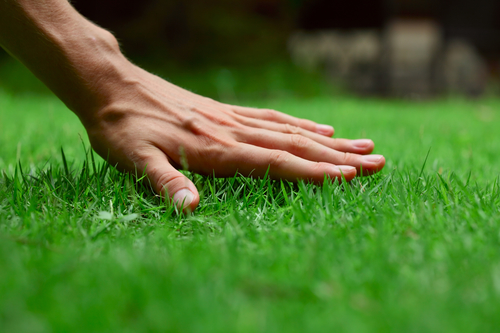
Before raking debris, you should kill any moss with a lawn moss herbicide. For larger lawns, you can use a motorized scarifier. Ensure that you use a spring-tined rake. Scraping your lawn enhances its look and adds vigor to the lawn. Establish air channels in dense turf by placing a border fork in the soil. This action will draw plugs out of the soil.
After scraping and aerating your turf, fill the holes with a top dressing. You can purchase your top dressing from garden or hardware stores. It is such an affordable and simple technique that you can also make your own top dressing.
After all the fun times and frequent use during the summer, your lawn may exhibit signs of degeneration. Therefore, early autumn is a superb time to maintain any devastation. Make sure that your lawn is in excellent health for next year.
With the use of gloves, put some granular autumn fertilizer evenly over noticeable squares. If no rain falls within three days of applying the fertilizer, then wet it. In the initial stage of autumn, your soil would be warm enough and damp to plant grass seed. Additionally, scatter seed to correspond with your type of turf. Apply this at half of the suggested rate for contemporary turfs. This helps to enhance any depilated spots.
If you want to improve on the way you take care of your lawn then contact DK Landscaping. We are the experts in plant and lawn care. We can help you create the right conditions for a healthy and much improved lawn and garden.
Winter Landscaping – Its Actually Great For Your Lawn
During the latter time of the year, when the winter months begin to creep in, the outdoors transition into a dull and inhospitable place. All the activity then shifts to the indoors, however, for garden and lawn lovers alike, this is the ideal time to prep your lawns and gardens for the upcoming growing season. These are five easy tips you can consider, to keep your gardens and lawns in good shape during winter. Improve your winter landscaping techniques today!
Winter Landscaping Tips
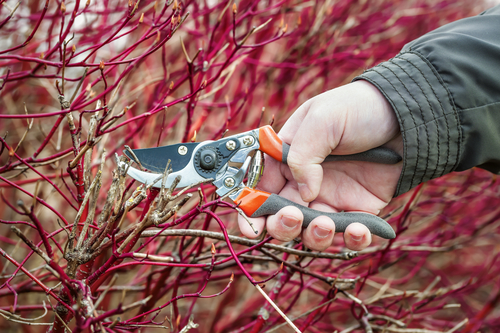
Pruning and trimming is a popular garden practice. This helps to shape, improve and maintain the general health of plants and trees. During the dormant, winter months carrying out these practices, tend to be fairly, popular and is encouraged,as during this time of dormancy, the vast majority of hedges, shrubs and trees, including evergreens and deciduous trees, can be pruned or trimmed, without causing damage to the plant or tree.
Heavy snowfall and high winds, usually come with the seasonal winter storms.Therefore it is recommended, that prior to this time, all high or decayed branches, be pruned or entirely removed. If or when stormy conditions occur, these decayed branches or dead trees can quickly transform into falling hazards, that pose serious threats of injury. With that said, not everyone may be confident enough to carry out pruning or trimming effectively. So we recommend, consulting a local, insured, tree removal service, who will handle all your trimming and pruning needs in a safe, professional and effective manner.
During the fall, leading into winter leaves are constantly falling, covering your garden or lawn from end to end with immense amounts of leaves. Cleaning and maintaining your lawns or gardens at this time, certainly proves to be a daunting task but is also very important. This practice allows your garden beds and lawns, to receive the adequate amounts of sunlight required, for the optimal growth of plants as well as lush healthy lawns.
Another resourceful and efficient tip one can utilize in effort to prep your garden for the upcoming growing season, is getting a head start planting your garden beds. One can begin by pruning all shrubs, trees and perennials.Secondly, clear and remove all leaves and other debris from beds. Afterward, define the edges of beds by hard edging and creating a perimeter pass along the edge, with a lawn mower. Once these steps are completed you can then begin to install your bulbs for spring.
Protecting plants from any damage or destruction, has always been a major concern for most gardeners,with the harsh,winter weather being no exception. A clever tip that has proven effective, to equip gardeners for this extreme period, is the use of mulch. Mulch is used to retain soil moisture, regulate soil temperature, suppress weed growth, serves as an aesthetic and most importantly, acts as a shield against the unfavourable, winter, conditions. Planting beds should be mulched at a depth of 1.5 – 2 inches, to ensure plant roots remain the right temperature as well as to offer the right amount of protection from any potential damage.
Ensuring that you maintain a safe and nurturing environment throughout your garden, should be a priority of every gardener, especially throughout the winter season. This would include tying up loose branches of evergreens and boxwoods,turning off and covering all water spigots, storing away any remaining, organic, chemicals and making sure that irrigation systems are properly winterized. With that said, please remember not to use a broom or shovel while removing snow from branches as they will be frozen, fragile and could easily sustain damage. If in doubt this winter season contact DK Landscaping for more information.
How to Grow Boxwood Shrubs
Boxwood is an evergreen plant that grows in small, dense hedges. It doesn’t flower noticeably, but its rich green color makes it good for foliage cover. They work well for borders or near entryways. However, it’s a slow-growing plant, so don’t expect it to be impressive overnight.
A Few Boxwood Facts
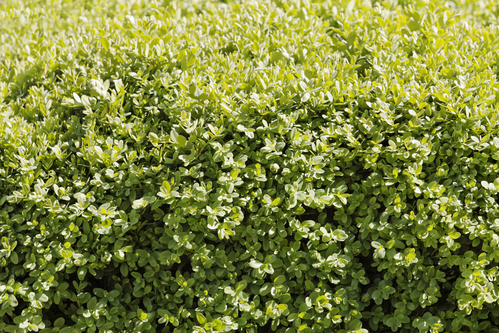
As with all plants, be sure you’re placing your boxwood shrubs well. Boxwood typically does best in partial or full sun, so don’t plant it on the shady side of a house. Boxwood shrubs prefer well-drained soil, although it’s not very picky about pH. In very hot climates, try to plant your shrubs so they’ll receive some shade during the heat of the day, and do your best to water them semi-regularly so they don’t wilt. Try to remember your climate will impact the health of your boxwood.
Boxwood is generally hardy, but it has a few pests to watch out for. The most notable is the boxwood leaf miner, which causes the leaves to turn yellow. You can spray the leaves with insecticide to kill the plant, or try for an organic option such as neem oil.
You may also notice phytophthora root rot, a fungal infection. The fungus kills the roots, so the plant has a harder time taking in moisture and nutrients, and eventually begins to die back. To prevent this, make sure you’re not overwatering your boxwood shrubs, and ensure the soil is draining well.
Winter bronzing is a phenomenon where a boxwood’s leaves turn orange in the cold. This isn’t fatal to the plant, but many gardeners find it unpleasant to have. Winter bronzing is often caused by wind exposure.
To avoid winter bronzing, try to plant your boxwood shrubs such that they’re sheltered from freezing winter winds. If your ground isn’t frozen, give your shrubs a deep watering, especially if you live in a region with dry winters. You may also consider using a slow-release fertilizer in spring and fall. If your boxwoods are still bronzing, try spraying the leaves with an anti-desiccant, to keep their moisture in.
Though it takes dedication to reach its full potential, boxwood is a beautiful foliage plant that’s a staple of many gardens. If you plan to install boxwood shrubs around your home, get in touch with us and we’ll walk you through the process. Contact us at DK Landscaping for more gardening tips and advice.
Time To Mulch
There are various kinds of organic mulches used in garden maintenance. They act as fertilizers giving your soil the nutrients and conditions needed for sustainable growth. The State of California has policies in place that govern the production of mulch. Take a look at the various kinds of mulches that are highly recommended:
Types Of Mulches
Newspaper is becoming more widespread as mulch. Shredded newspaper has been used to maintain a damp environment for plants during shipping. This technique has been used on land as well. The way this all works is because layers of newspaper have excellent water retaining capabilities. They also help to control weeds and manage soil temperatures. This is an excellent benefit.
Shredded Leaves can be utilized as mulch any and everywhere in your garden. This is one of the most natural forms of mulch. Many gardens have flourished by using this technique.
Grass Clippings is used in the isolated areas of your garden where you want to restrain weeds. Grass clippings also are prone to mass down the water causing it not to pass through.
As part of your gardening maintenance plan you should utilize a mulching mower and leave back the clippings on the lawn to supply added fertility to your soil. Nonetheless, if you place your grass clippings in bags do not discard of them, unless you have utilized weed killer or some other pesticide on your lawn. You should also know that synthetic lawn care items can be harmful to some flowers, so you may not want to use them in your garden. Grass clippings that are not treated should be placed in your compost bin or utilize as mulch for open areas are not yet planted.
Some gardeners hate to see leaves in their garden, and that’s a fact. Leaves really aren’t suitable for a formal garden. But if you cover your garden with the leaf mulch it tend to fusion into the garden in no time. This way you can still have the beauty of your garden untarnished while giving it the advantages of having mulch added.
During rainy times, unshredded leaves may mass together and fight off the water. If the leaves are too wet to shred, they can still be used. If you are considering implementing this gardening improvement technique then seek an expert gardening service. Contact us the gardening experts for more sound advice and gardening maintenance.
Fall Garden Care
Fall is coming, and you should consider these useful tips as part of your garden care regime. After a flourishing summer of fighting weeds take pleasure in promoting a wholesome garden. This is truly a great time to entertain your family and friends in your backyard. By adhering to these easy fall garden care methods, you can ensure that it’s ready to be even more charming next spring.
Fall Garden Tips – Here’s What To Do
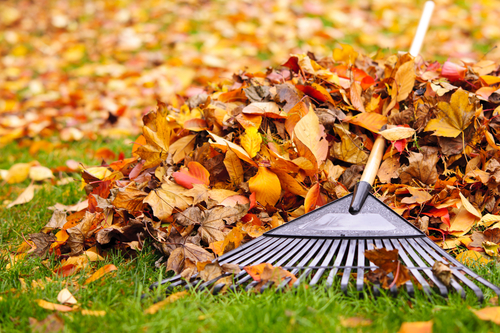
By the fall season, you should already be victorious in eradicating the weeds on your lawn. You should deal with any hold-outs before the leaves and snow make it too complex for you to handle. As it can be more difficult to handle the weeds. In addition, weeds can be extremely vigorous and can take over in the fall season when your lawn is less lively.
You should ensure that your lawn has an in-depth raking before snow falls. As time goes by, the leaves will begin to decay, depleting moisture out of the soil and encouraging a heartening dwelling for insects that may be damaging to your lawn. In addition, the plentiful layer of decomposed leaves may also leave behind dead spots in your lawn in the spring. Permitting weeds to rapidly move in and take over.
Over time, the soil of your lawn becomes flattened, decreasing the air pockets that permit nutrients and water to nourish the base of the roots. To fight this, ensure that you have your lawn aerated on a yearly basis. The best time to do this would be in the fall season. As it gives your lawn an opportunity to obtain the nutrients and water required for long term sustainability.
As your lawn matures it gets fatigued and the reproduction of your lawn decreases. Homeowners never want to see their lawns look unhealthy. It is suggested that your cover your entire lawn with grass seed before snow begins to fall. This will promote new lawn to start growing that will fill in the ailing areas. Consequently, next spring will have a winsome lawn outside.
There is an exceptional fall fertilizer that will assist your lawn with all the nutrients required to be wholesome in the fall season. This will encourage them to back even stronger in the spring season. It is better to fertilize early in the fall season to have your lawn charming and healthy in the autumn. Contact us and take pride in having a lawn that is luxurious.
How to Transplant Shrubs in Summer
The best times of year to transplant trees and shrubs are spring and fall; however, certain situations may make it necessary to move your plants outside of those seasons. For example, you may want to take your shrubs with you if you are moving or you may have to move the plant because of the weather.

If you find it necessary to move a plant during the warmest part of the year, you will need to take certain steps to ensure its health. Here are some tips on how to move shrubs in the summer without harming them:
- Choose the Right Location
Transplantation represents a dramatic change and a plant will have to adapt to its new environment slowly in order to survive. This means that you will have to keep factors like sunlight, soil drainage and soil pH in mind when choosing a new location. - Dig an Appropriate Hole
You will need to dig a hole that is approximately twice as large as the shrub’s root system. The additional space allows the roots to grow into the new site comfortably. - Carefully Remove the Shrub
Work carefully to avoid damaging the root system when uprooting shrubs. You will want to take as much of it as you can. You will also want to move some of the soil from the old location to the new one. You can place larger shrubs on a tarp and drag them to the new location along with some of the soil. - Add Adequate Water to the New Hole
You will want to wet the hole thoroughly before placing the shrub into it but avoid oversaturating it as this can cause the shrub’s roots to rot. - Place Shrub in the New Hole
Along with the shrub, place some of the soil from the old location into the hole as well as some potting soil. Pat the soil down around the base to ensure that the shrub stays upright. You can add watering stakes to the ground so that the shrub can water at root level but this is not essential. Be careful to avoid damage to the roots when installing the watering stakes.
The quality of your landscaping plays a major role in your ability to enjoy your yard and in your property value. If you need help with moving shrubs or with any other aspect of landscape maintenance, contact us today. Our experienced landscaping crews know how to move your shrubs and trees quickly and without damaging them.
Plant Trees and Shrubs That Add Interest to a Garden in Winter
Tons of homeowners run down to their local nursery to pick up shrubs and small trees for their garden design. You can actually find some great deals by purchasing cold-hardy plants, shrubs and trees out of season, so to speak, prior to the thermometer dropping in September and October.
The problem is that these same homeowners don’t exactly know what to do with their cold-hardy plants and shrubs or whether they can set to work planting them in late fall and early winter or if they have to wait until the weather warms up in spring to put on their gardener’s hat.
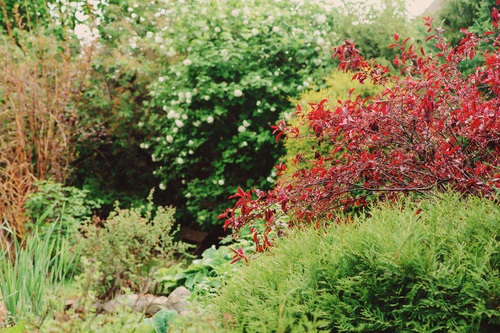
How to Deal with Cold-Hardy Trees, Plants and Shrubs
What you may not know is that a variety of shrubs, plants, perennials, and trees can survive and even thrive in – what the USDA terms – the coldest planting zones in the country.
So, the question no doubt on the minds of everyone in these more frigid hardiness zones is whether to keep your trees and shrubs in pots throughout the cooler months or whether you can get started in late fall.
The answer’s that you can choose to do either, but you can definitely set to work right now, start planting in the late fall, and beautify your garden and outdoor decor throughout the winter and into the verdant spring months. Evergreen shrubs and hawthorn are two popular options.
What you still want to do, though, is manage your expectations and perhaps set your sights lower than a veritable Garden of Eden springing up in the crisp winter months. Here’s how to get started:
- Follow Nature’s Lead
You would be very hard-pressed to find potted plants, much less artificial ones, growing wild out in nature.
Taken that to its logical extension, your plants and shrubs will typically be healthier and happier by being put into the ground than staying in a plastic pot in your garage throughout the winter season.
- What Should I Plant?
Evergreen garden shrubs are but one example of resilient shrubs that can really add another dimension to your garden and front lawn during the winter without causing too much heartache in terms of worry or added energy you have to expend to make it happen.
Both conifer trees and evergreen shrubs can make it through winter in one piece, and the needle-leaf style of evergreen shrubs are normally considered more robust in cold-hardy climates.
Yew and Juniper are two kinds of evergreen garden shrubs that are resilient, tolerant to cold temperatures and drought conditions, yet really benefit from developing their root networks early in the fall (if you’re thinking about planting these early) as opposed to waiting until early-to-mid spring.
Deciduous trees like the Japanese Maple, eucalyptus, birch or hawthorn tree can even demonstrate fruit growth in the winter, which really adds a splash of color and interesting contrast against the icicles and powdery, white winter snow.
- Going About It the Right Way
Year-round plants, shrubs and trees don’t actually need the extra shot in the arm that less hardy flora might.
There’s no need to use a crazy amount of fertilizer or growth agents in the late fall to get the most out of these trees and shrubs throughout the winter.
Still, realize that many of these flora grow upwards and their root networks are delicate at this early stage. Try not to move around or prune these shrubs early in their development.
Much and a little water in the fall are probably all these plants need to avoid desiccation and thrive for you year-round. Contact us today for more tips or help in getting started.
Xeriscape California Plant List
California boasts a rich variety of flowers, trees, and flora ~ a somewhat surprising fact considering the prevalence of arid landscapes and drought. Home and business owners who want an eco-friendly, economic landscaping solution would be wise to utilize xeriscape, a form of landscaping that combines drought-resistant plants, efficient irrigation, and thoughtful garden design to create beautiful outdoor spaces. To get started, check out this list of plants that will make a wonderful addition to your xeriscaping.

Aloe
Aloes are a variety of succulents that do well in dry environments. One common variety is Aloe Vera, also known as burn plant due to its ability to soothe sunburn. Aloe Vera can grow up to 3 feet in height and produces lovely yellow flowers. Although commonly grown as houseplants, Aloes can also thrive in xeriscape environments due to their preference for bright light and dry, well-draining soil.
Agave
This xeriscape-friendly plant is known for its use in making tequila! There are many different varieties, but all have a main taproot that discourages transplanting after they have been installed. A loose, well-draining soil is a must and plants prefer to dry out completely between watering. Agave tends to bloom once, then die, but often produces pups, or baby plants, that can replace the original.
Mexican Sage
A member of the Salvia family, Mexican Sage is a perennial that produces gorgeous purple or white flowers that can make it a stunning xeriscape addition. Moisture requirements are somewhat higher than for previously mentioned succulent varieties, so it may not be ideal for very arid locations. However, it is drought tolerant and often attracts pollinators like butterflies and hummingbirds.
Verbena
Verbena comes in many varieties, including lemon, rose, and purpletop, just to name a few. Lemon verbena smells fantastic and can be used to make herbal tea. They can be grown as annuals or perennials and are resistant to heat and drought. Depending on the variety you choose, they can get quite tall and bushy, often producing beautiful, brightly colored flowers.
Honeysuckle
Most honeysuckle vine varieties smell fantastic, attract pollinators, produce beautiful flowers, and come back year-after-year. Being heat and drought resistant and fairly low maintenance makes them a wonderful addition to xeriscape areas. Full to partial sun and a well-draining soil are preferable. A fence, trellis, or other support system helps them grow to their full potential.
Sedge Grass
Sedges are a large family of grasses that work well in place of more high maintenance turf grass. They tend to be adaptable and often require little water. California meadow sedge is native to the Pacific coast area and tolerates heat, drought, and even foot traffic. It can be used as part of an eye-catching xeriscape focal point or used to replace a more traditional lawn. Since it requires very little mowing and no fertilizers or other chemicals, sedge grass is a great, no-fuss addition to any landscape.
Hollyleaf Cherry
The hollyleaf cherry tree is a shrub native to the California coast that produces lush, evergreen leaves, cream colored flowers, and edible fruit. The fruit is not very fleshy though, so it probably won’t become your favorite snack, but birds and other wildlife may appreciate it. Hollyleaf cherry is very tolerant of drought, thrives in full to partial sun, and prefers well-draining soil.
Xeriscape landscaping techniques are sure to become more popular as awareness grows about the need to conserve water and choose drought resistant plants. DK Landscaping strives to create beautiful landscapes that function well in the natural environment, so call us or contact us via email today to get started on a xeriscape project for your home or business.
Plant Maintenance : Sprinkler Systems, Irrigation Controllers
A home plant maintenance system might just be the most worthwhile outdoor home improvement project going today. An automated sprinkler system – brought under your control with an irrigation controller – beautifies your entire lawn and garden and makes having guests over a pleasure instead of something to fret over.
Irrigation systems are designed to efficiently deliver water straight to your roots without squandering water and overwatering, which can cause its own set of problems. You really want to avoid overwatering since waterlogged soil precludes your roots from absorbing oxygen and really flourishing.

How Homeowners Benefit By Automating Their Irrigation
Without a home automated sprinkler system or drip irrigation system loaded with sensors and brought under your control with an irrigation controller, it can be difficult to determine what exactly the right amount of water for your lawn and garden.
An automated system with controllers and sensors, in short, allows you to have greater peace of mind and save potentially hundreds of hours every year on watering and manual maintenance that could otherwise be automated and strictly measured with Smart controllers and sensors.
- Irrigation Controllers For Your Home
Automated sprinkler systems outfitted with an irrigation controller and sensors to detect soil, water and weather conditions greatly benefit homeowners and business owners alike. You may have heard irrigation controllers called “irrigation timers,” and that’s because these controllers can kickstart your automated sprinkler system at just the right time, every time.
An irrigation controller works with automated sprinkler systems as well as more traditional drip irrigation systems.
The reason homeowners are increasingly choosing to use irrigation controllers in their lawns and gardens is because they want to have the autonomy to set the exact starting time of watering cycles and alter the frequency and duration of daily irrigation based around their needs and changing seasons.
Every home is different and has different irrigation needs: You may have a home in an arid area that needs longer and more frequent home irrigation or a home in a temperate climate that gets plenty of rain and sunshine.
You might also have a larger lawn or garden with flowers, plants, and vegetables that would do well with a little bit of water throughout the day. Irrigation controllers let you have that control and deliver just the right amount of nourishment that your home, lawn and garden need.
- Get It Just Right With Sensors Too
Imagine this scenario: You have your automated home sprinkler system installed, you’re feeling good about your lawn, garden and the shrubs in front of your home, and you even have an irrigation controller setup that allows you to control the duration, time and frequency of your daily watering regimen.
Things are looking good…but can you improve things further? Can you virtually eliminate the possibility of overwatering?
The answer’s yes you can: automated sprinkler systems that use both sensors and irrigation controllers allow you the most control. How? Irrigation controllers essentially set the basic framework that you and your landscape maintenance company have determined is the best for your home’s or workplace’s lawn.
Controllers then fine-tune the process by giving your real-time rain and weather information that can tell your automated system to deliver more water (e.g., in drought-like conditions) or less water when your lawn is in danger of being overwatered. As we discussed above, overwatering can be just as detrimental as underwatering.
An automated sprinkler system or drip irrigation system with an irrigation control and sensors gives you more options, virtually eliminates the chances of over/underwatering, and allows you to efficiently bring the best out of your lawn, garden, home and workplace. Contact us for more lawn care tips.





